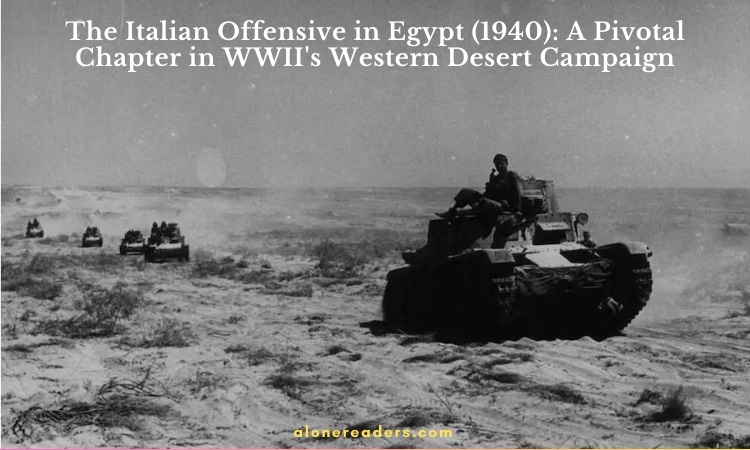
The Italian invasion of Egypt, known as Operazione E, marked a significant turning point in the Second World War. It was not just a military operation but a strategic endeavor that pitted the Italian 10th Army against the British, Commonwealth, and Free French forces in the then-neutral Kingdom of Egypt. This operation, beginning in 1940, transitioned from mere border skirmishes to the full-fledged Western Desert Campaign, lasting until 1943.
The primary Italian goal was to advance from Libya along the Egyptian coast and seize the Suez Canal, a vital strategic point. This ambitious plan, however, faced numerous delays and eventually scaled back, focusing on an advance to Sidi Barrani and engaging British forces in the vicinity.
Commanded by Marshal Rodolfo Graziani, the Italian 10th Army moved approximately 65 miles (105 kilometers) into Egypt. This incursion was met by the British screening forces of the 7th Support Group, part of the 7th Armoured Division. The main British force remained near Mersa Matruh, a significant military base in the Western Desert.
On 16 September 1940, the Italian advance halted at Sidi Barrani, where they established defensive positions. Despite the Italian army outnumbering the British, the casualties were relatively low: 40 British and 120 Italian soldiers killed. The Italians then prepared for a further push, constructing the Via della Vittoria, an extension of the Libyan Via Balbia, and accumulating supplies for an anticipated confrontation at Mersa Matruh.
Before the Italians could resume their advance, the British initiated Operation Compass on 8 December. This operation, initially planned as a brief raid, turned into a significant offensive, forcing the Italian 10th Army into a rapid retreat.
The retreat of the Italian forces became a chase, with the British pursuing them along the coast to Sollum and across the border into Libya, capturing key locations like Bardia, Tobruk, Derna, Mechili, Beda Fomm, and El Agheila on the Gulf of Sirte.
The British forces suffered approximately 1,900 casualties (killed and wounded) during Operation Compass. In contrast, the Italian forces faced a devastating blow with around 133,298 Italian and Libyan prisoners taken, along with the capture of 420 tanks, over 845 guns, and numerous aircraft.
The Italian invasion of Egypt and the subsequent British counter-offensive had profound implications for the North African theater of WWII. It demonstrated the weaknesses in the Italian military strategy and equipment and highlighted the effectiveness of British tactics and leadership.
The failure of the Italian invasion put pressure on Germany to intervene in North Africa, leading to the entry of the Afrika Korps under Erwin Rommel. This shift marked a new phase in the Western Desert Campaign, with increased involvement from the Axis powers.
The Italian strategy, while ambitious, was hampered by logistical challenges and overextension. The British, on the other hand, effectively utilized their limited resources and strategic positioning, turning the tide of the campaign in their favor.
The Italian invasion of Egypt in 1940 was more than a military operation; it was a crucial episode that shaped the course of the Second World War in North Africa. It underscored the importance of strategic planning, logistics, and the capacity to adapt to rapidly changing battlefield conditions. This campaign remains a testament to the complexities and unpredictabilities of war, offering valuable lessons for military strategists and historians alike.